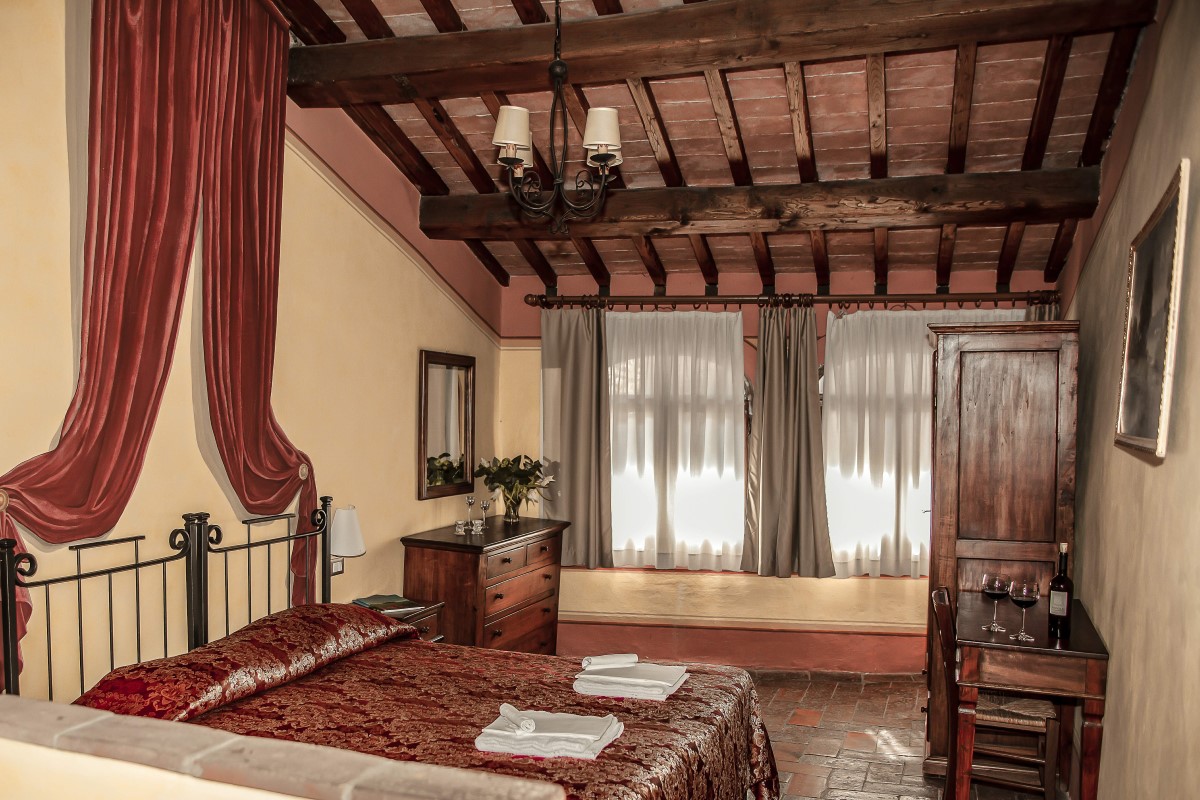
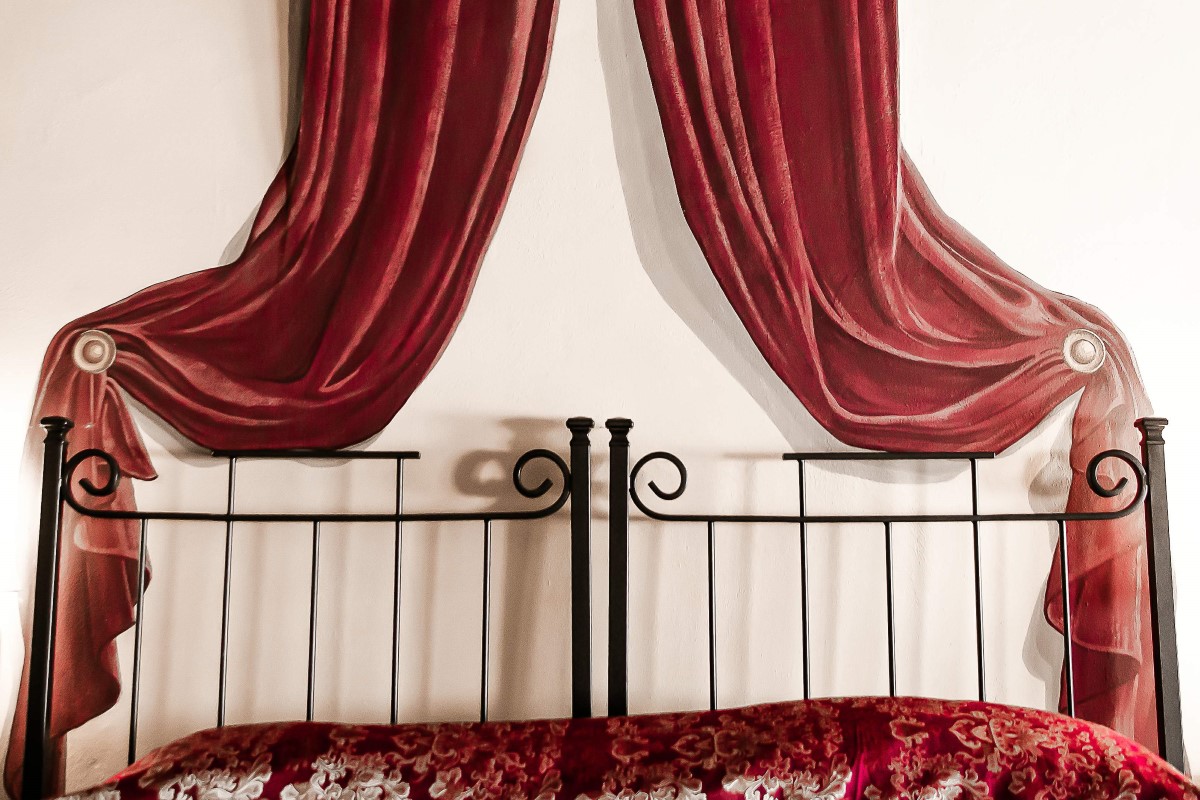
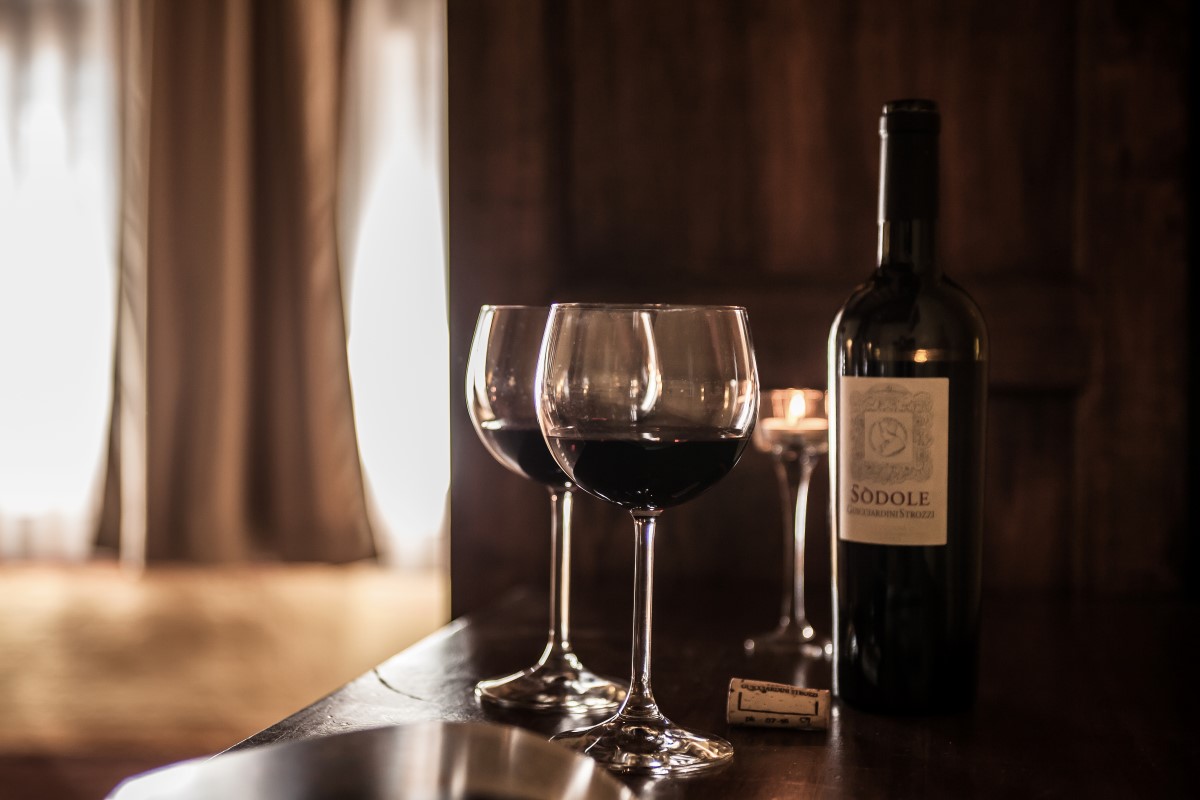
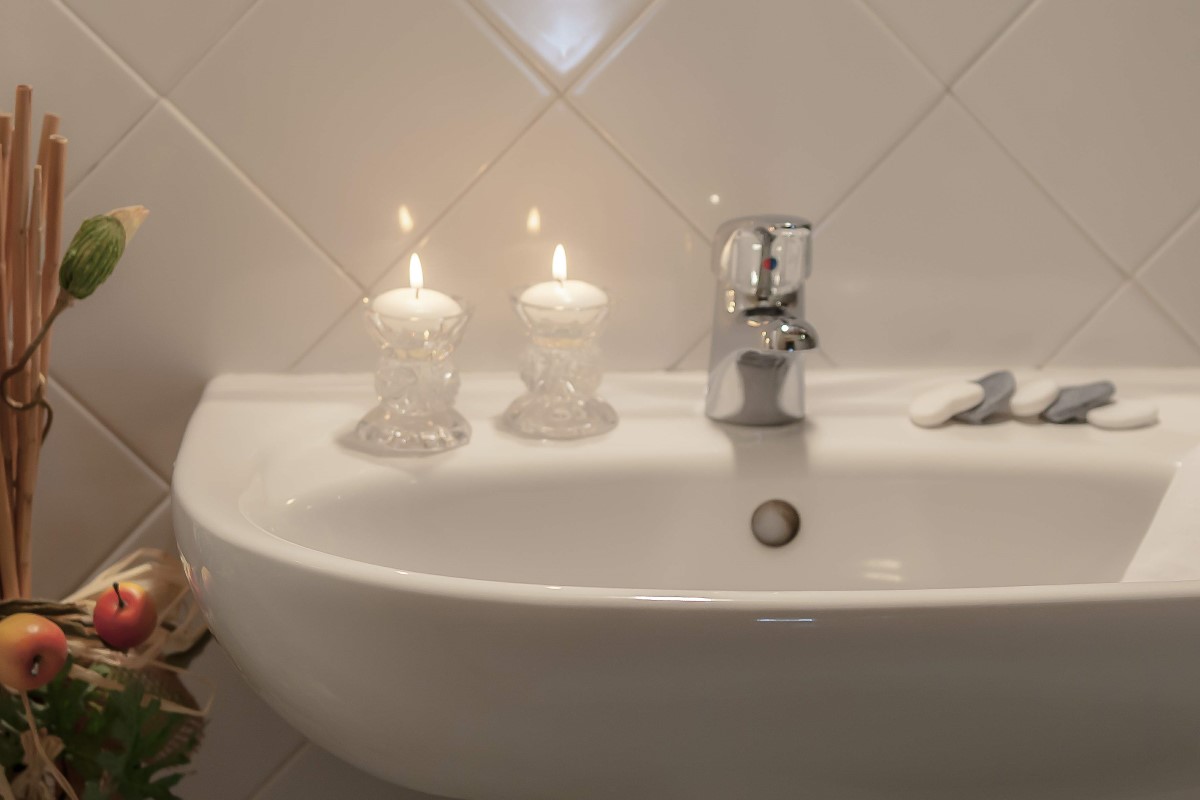
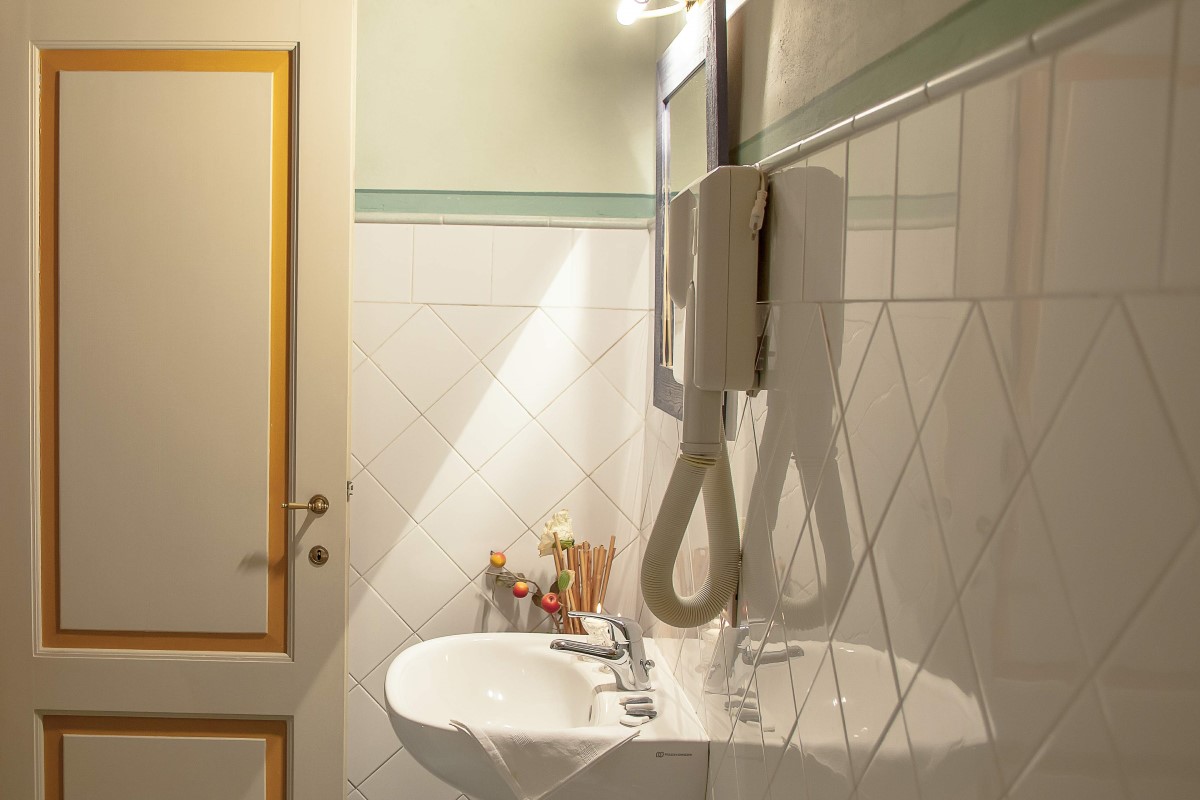
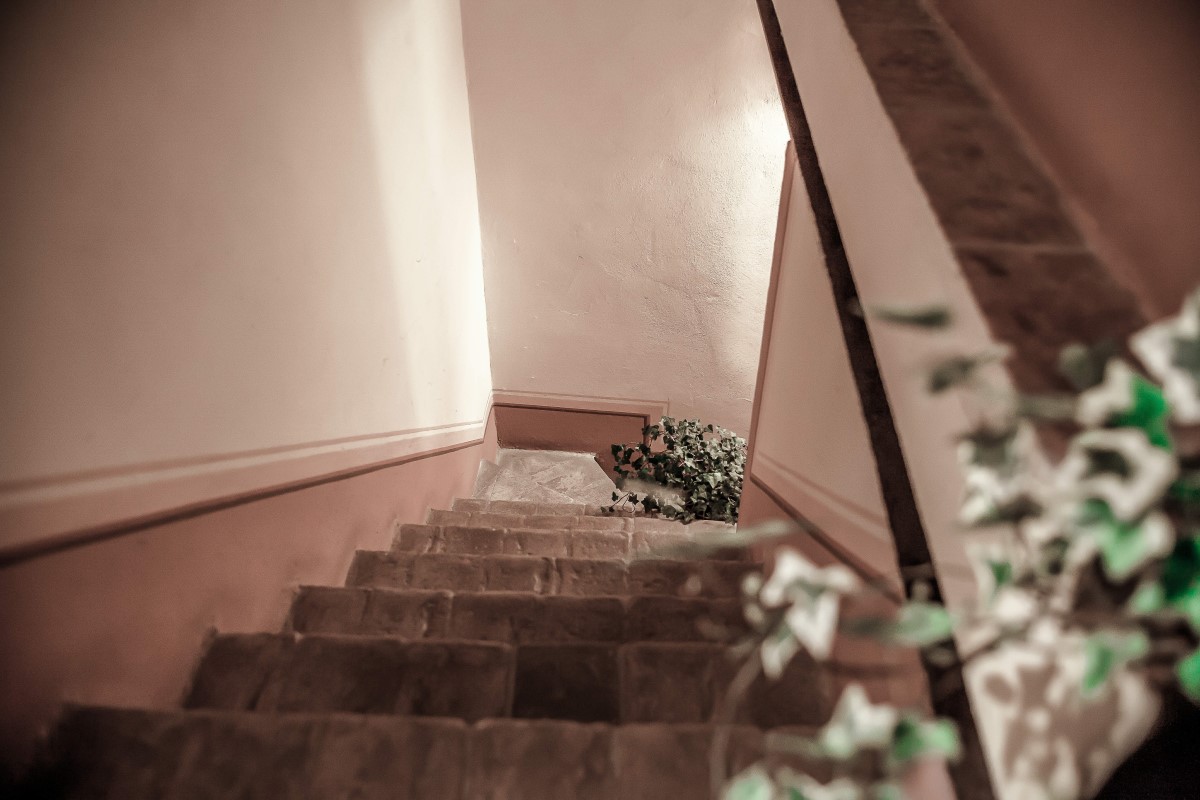
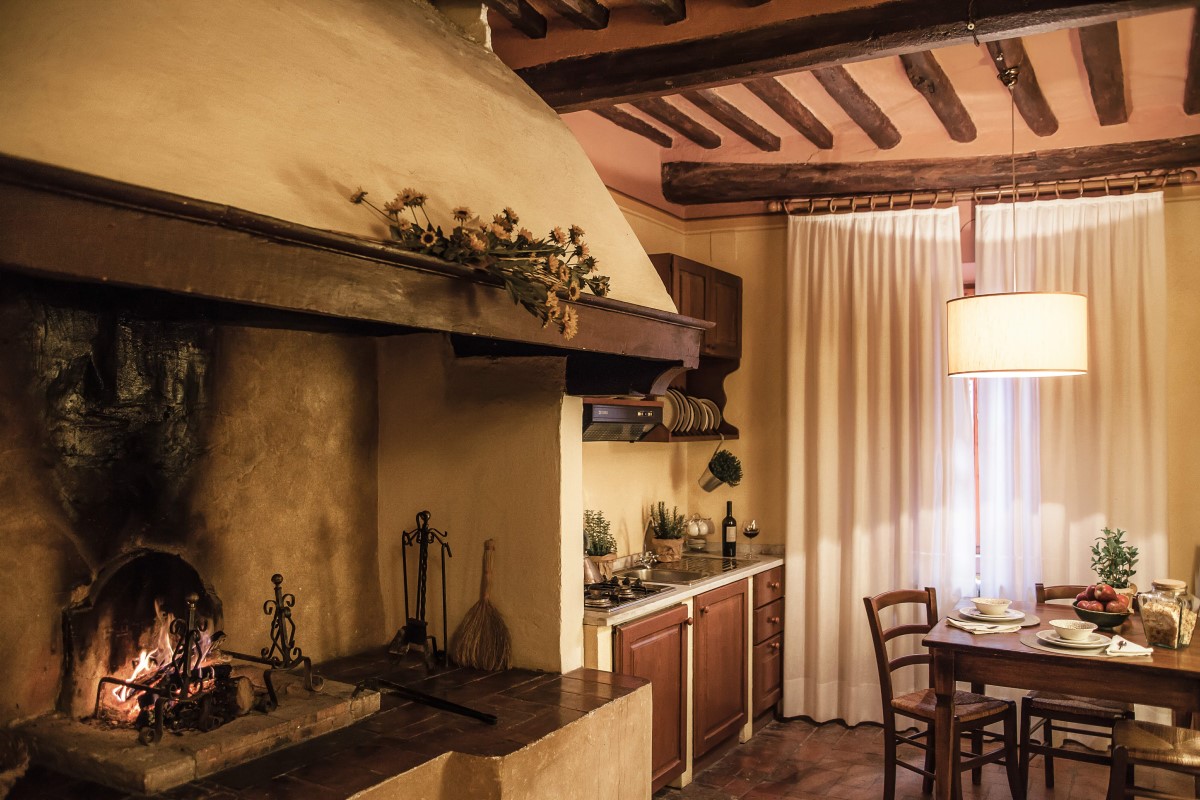
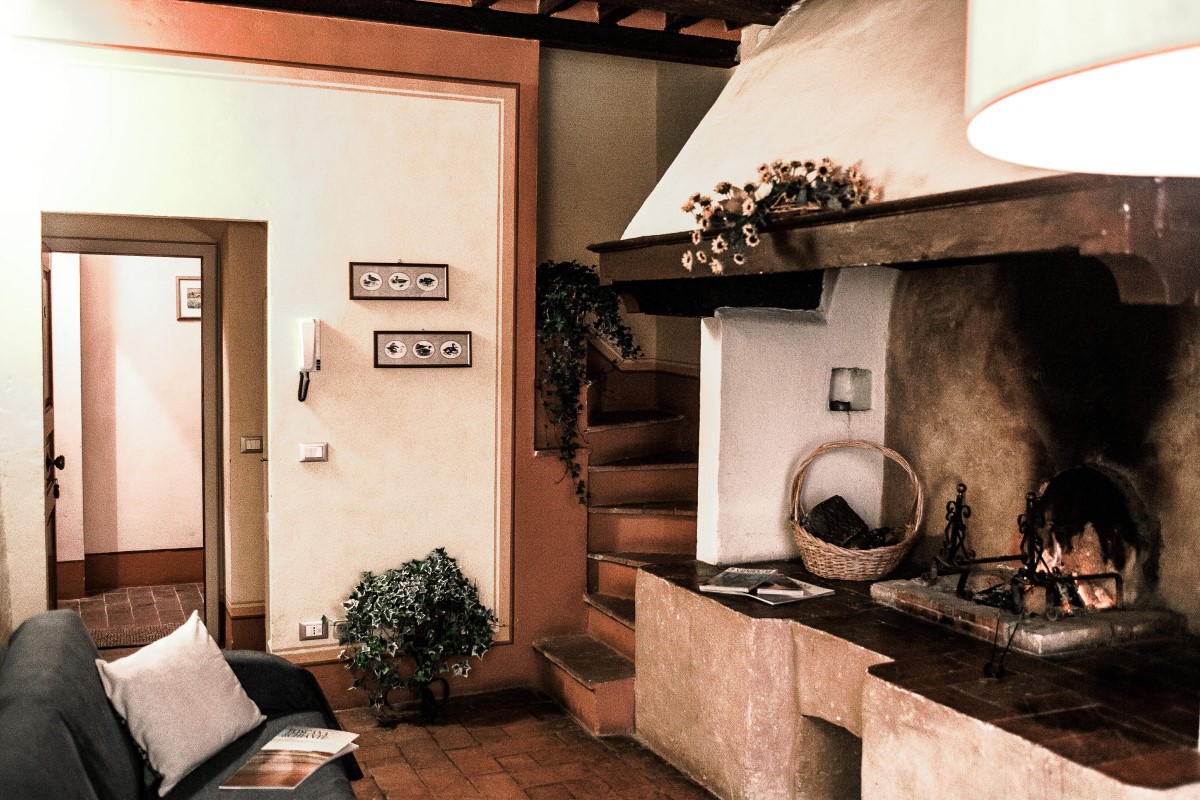
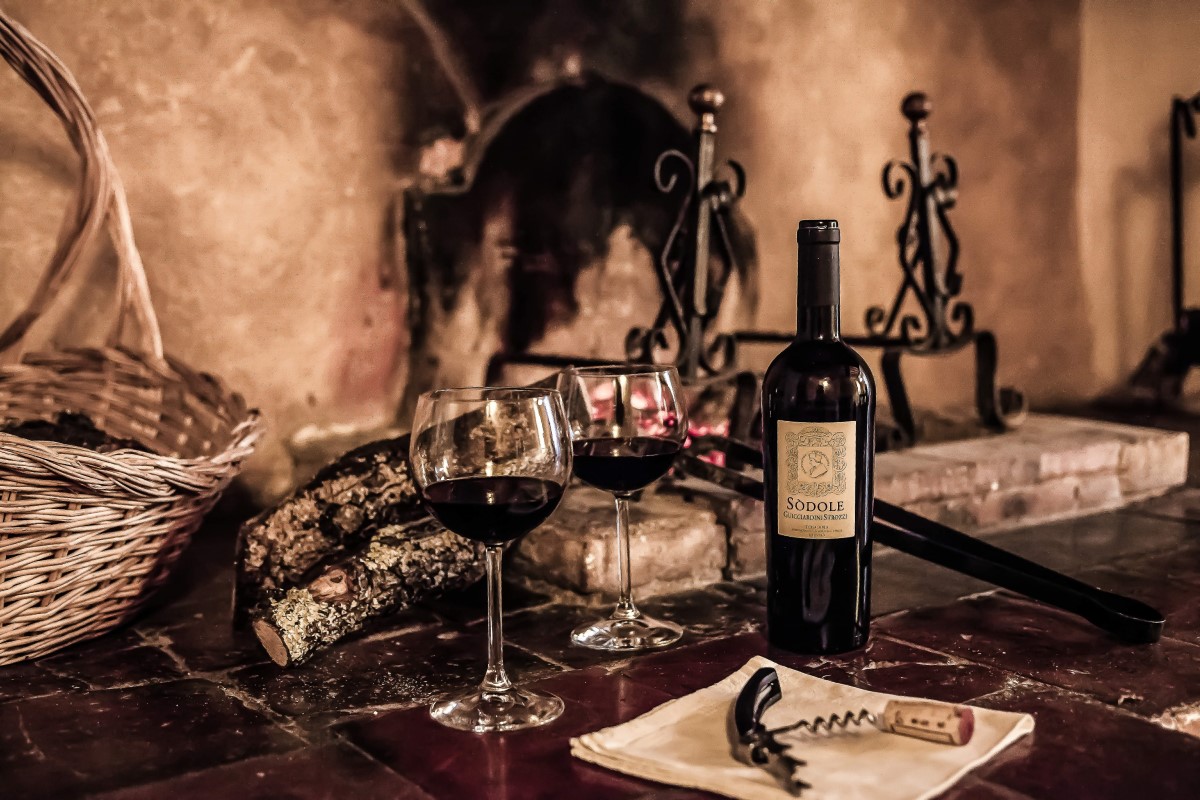
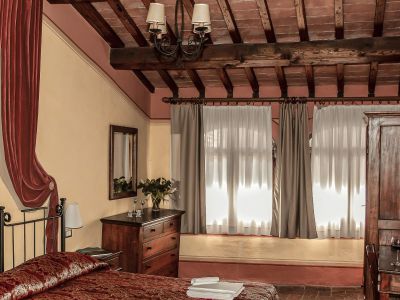


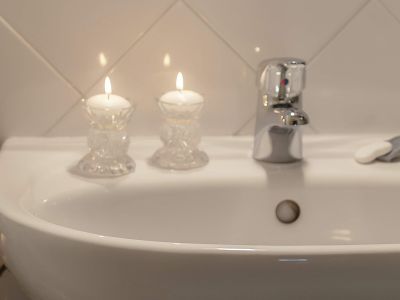

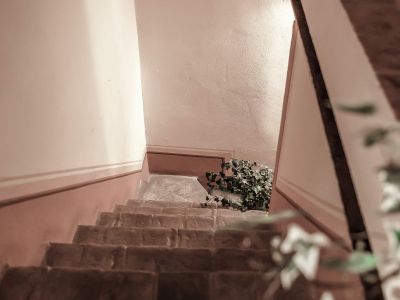
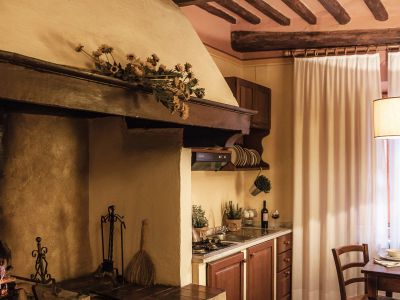
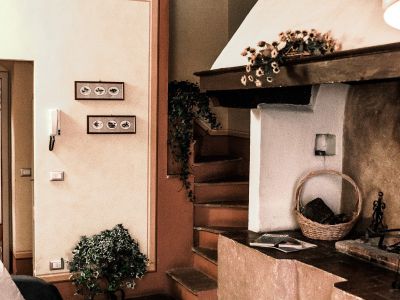
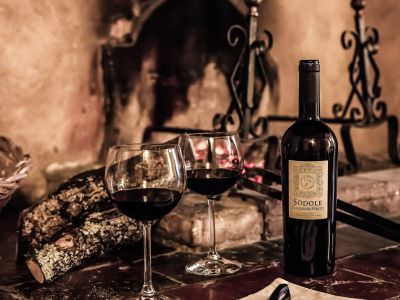
Delightful two-levels apartment of 60 sqm. It takes its name from the big original fireplace located in the living room. On the ground floor there is a kitchen-living room with the ancient Tuscan fireplace perfectly working; our guests will find everything they need to light the fire, if they want to: the wood, free of charge, is always available in the woodshed located in the garden. Upstairs there are the double bedroom with large arch windows and the bathroom with shower. The apartment overlooks the picturesque alley of Via Cellolese (pedestrian area). We recommend it for romantic stays. Entrance from Viale Garibaldi.
The Tuscan Farm - the fireplace
The structure of the typical Tuscan farmhouse was indeed very simple: on the ground floor there was the kitchen, typically large and spacious: it was the place where the family spent most of the time, especially during winter. Some domestic rural activities were carried out in front of the fireplace, such as sallow tree branches cleaning (used for vines binding) or basketworks for demijohn wrapping. At the centre of the kitchen stood the fireplace and the area around was and is currently called "the fire corner"; a place where, in the cold winter days, the old and the little ones gathered all together to warm up. Under the fireplace hood stood a black pail or a small boiler full of hot water, useful for the various domestic services, in addition to two or more stoves, with various tripods. In addition to its undoubtedly practical importance, the fireplace was the place where, on cold winter evenings, families gathered to talk about everyday life, about difficulties, and where kids sat listening to the tales and stories narrated by the old ones. Not far from the kitchen, there was the oven. In the rural family, up to two or three generations ago, bread was baked at home, weekly. The bread quality was better than the one we eat today: it remained fragrant for the whole week, edible also for two weeks. The housewives, to make it last longer, mixed flour and water without adding salt, which was rarely available for the poorest families. Here comes the tradition of Tuscan bread, famous and unique just because it is salt-free.